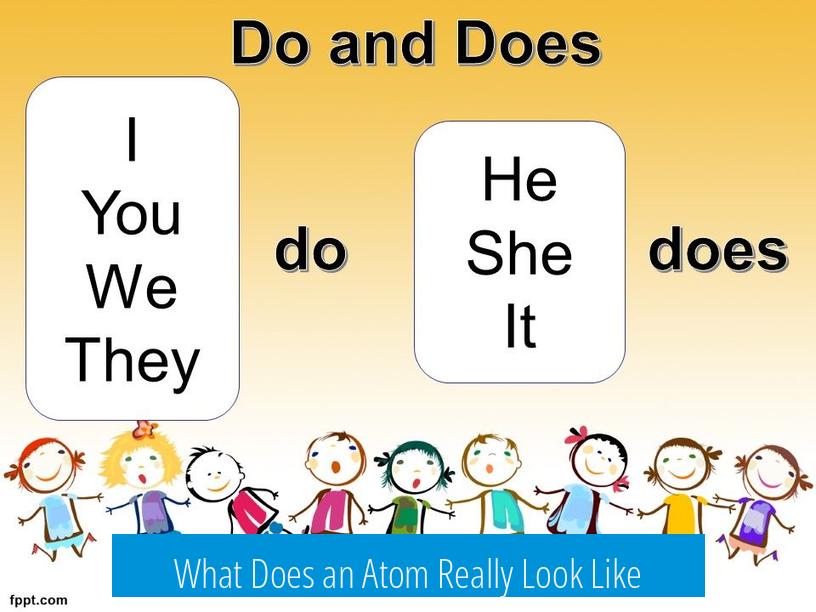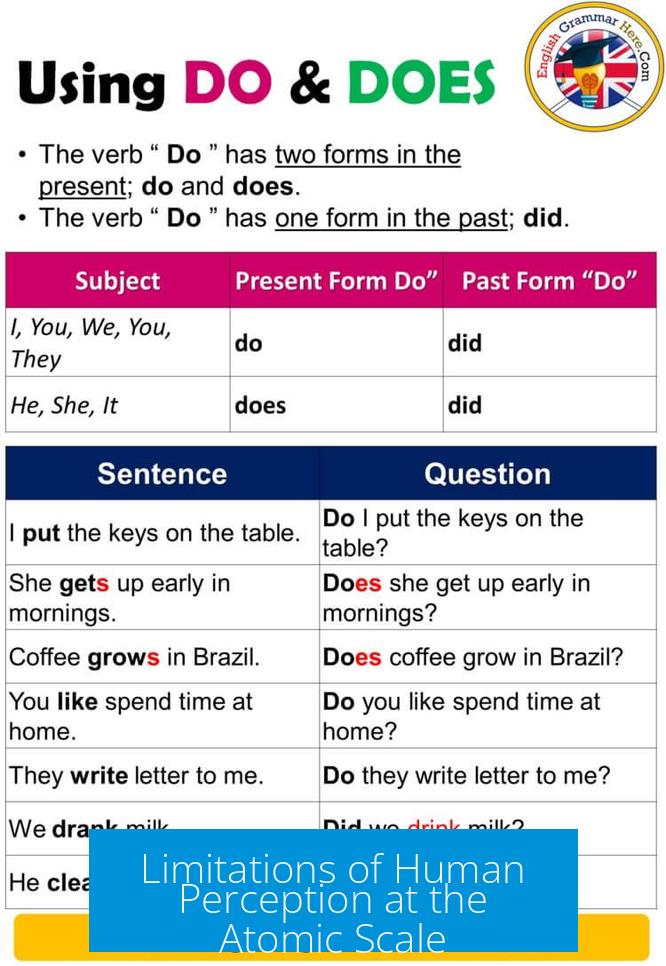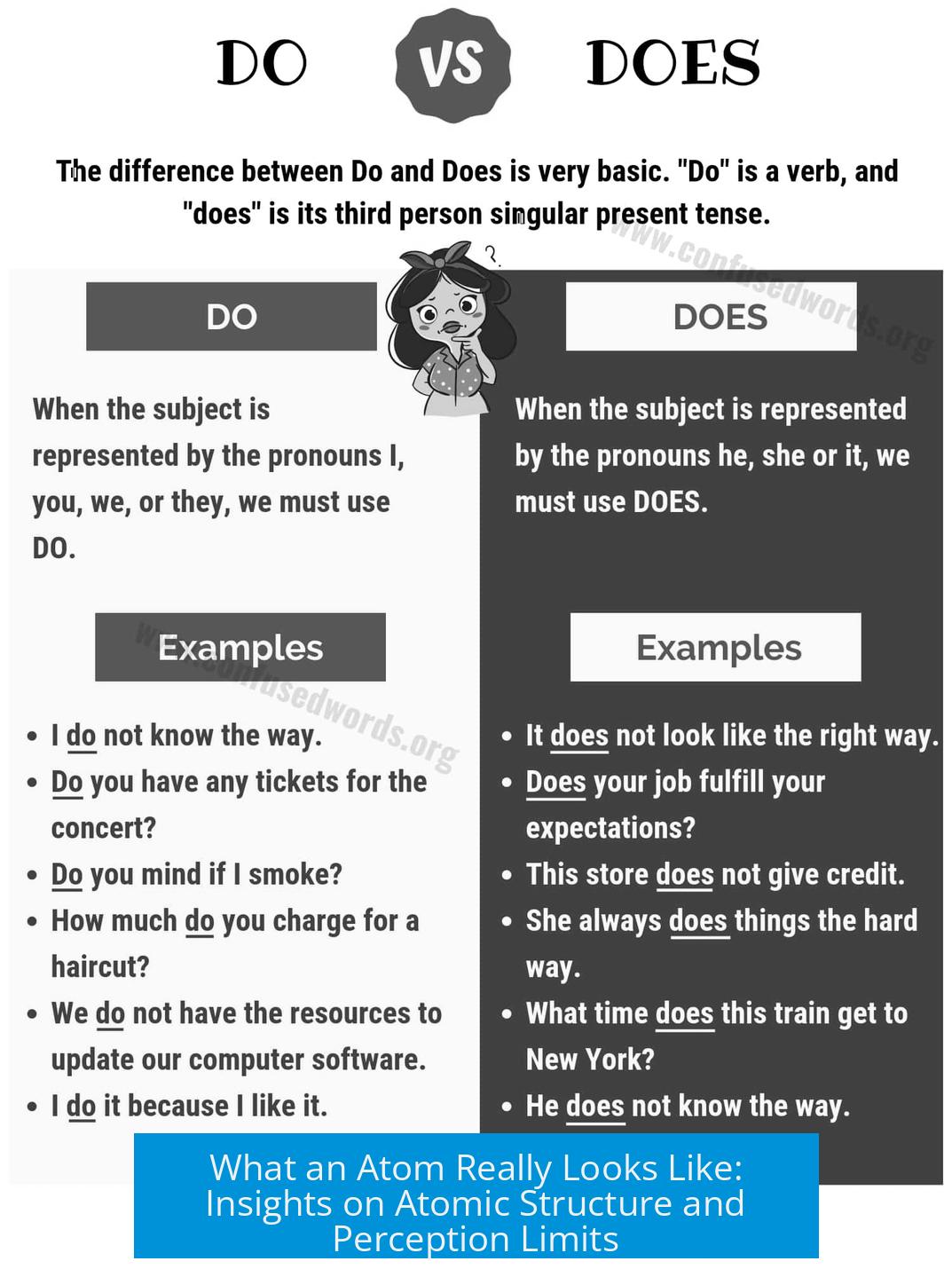What Does an Atom Really Look Like?

An atom does not “look” like anything in the traditional sense. Its size and fundamental nature place it beyond direct human visualization. Instead of a defined shape, an atom is described by complex quantum mechanical models, presenting probabilistic clouds of electron density rather than fixed orbits or solid spheres.
Limitations of Human Perception at the Atomic Scale

Atoms exist at a scale far smaller than the wavelengths of visible light. Human vision operates using photons with specific wavelengths, but these wavelengths cannot interact with or reflect off atoms in a way that produces images. Consequently, conventional sight cannot capture the atom’s true appearance.
As one expert remark explained, the concept of an atom’s “look” is fundamentally flawed because seeing relies on light bouncing off an object, and atoms are simply too small to reflect visible photons.
Beyond size, atoms challenge our usual concepts of physical properties. Position and velocity become uncertain and lack exact definition. This probabilistic and abstract nature defies intuitive understanding, making a mental image nearly impossible.
Quantum Mechanics and the Probabilistic Nature of Atoms
Atoms and their electrons do not behave like everyday objects. Instead, they exist as quantum systems described by probabilities rather than certainties. The electron’s position cannot be pinned down precisely because of the Heisenberg Uncertainty Principle, which limits simultaneous knowledge of position and momentum.
Electrons are better modeled as wave-like entities characterized by wavefunctions. These wavefunctions define the probability of finding an electron at any point in space. They do not depict a rigid path or orbit but rather a “cloud” where electrons might be located.
“An orbital isn’t a thing, it’s a location… an orbital is a place where one or two electrons can be found. Electrons can be both waves and particles, allowing them to be everywhere in the orbital at once.”
Understanding Orbitals: Quantum Mechanical Constructs
| Concept | Description |
|---|---|
| Orbitals | Mathematical descriptions of electron probability distributions, not physical objects. They represent resonant states near the nucleus created by quantum mechanics. |
| Electron Spin & Pauli Exclusion | Electrons are fermions with spin 1/2. They cannot occupy the same quantum state simultaneously. This rule governs how electrons fill orbitals. |
| 1s Orbital | A spherical region of high electron probability near the nucleus. Its electron density taps off toward zero but never fully reaches zero at infinite distance. |
| 2s Orbital | Similar to 1s but contains a nodal sphere where electron density is zero, dividing regions of electron probability with opposite phase. |
| 2p Orbitals | Shaped like two lobes with a node at the nucleus, they have directional orientation (px, py, pz) and can hold up to six electrons in total. |
Each orbital type (s, p, d, f) describes different spatial patterns of electron density. These orbitals are foundational to understanding atomic behavior and chemical bonding.
Visual Analogies and Common Misconceptions
Visualizing atoms by analogy helps but can mislead. The popular image of electrons as tiny balls orbiting the nucleus like planets is inaccurate. Rather, electrons form fuzzy clouds — probability regions around the nucleus.
Textbook shapes like spheres, dumbbells, or donuts attempt to represent orbitals but lack physical reality. One humorous analogy suggests viewing cotton balls under the influence of alcohol to mimic the fuzzy cloud shapes of orbitals.
Scientists describe the nucleus as a small, dense point with electrons diffusing in probabilistic clouds. The orbitals do not imply fixed boundaries or paths but regions of likely presence.
Experimental Observations and Techniques
Directly seeing an atom or orbitals is impossible. Instead, scientists infer atomic structure by measuring electron density distributions using techniques like X-ray diffraction, electron scattering, and electron diffraction.
These methods do not create images as seen with visible light but provide data to reconstruct electron density patterns. This data matches predictions from quantum mechanical calculations of wavefunctions.
This experimental evidence confirms atoms have size and shape in terms of electron clouds, but these shapes remain mathematical constructs rather than visible features.
Conceptual Understanding and Mathematical Framework
The common images of atoms stem from historical approximations. Modern quantum mechanics refines these, emphasizing the wave-particle duality of electrons and the probabilistic nature of atomic structure.
Electrons’ behavior follows the Schrödinger equation, a complex differential equation modeling the evolution of quantum states over time and space.
iħ ∂ψ(x,t)/∂t = −(ħ2/2m) ∂2ψ(x,t)/∂x2 + V(x)ψ(x,t)
Here, ψ represents the wavefunction, which encodes probabilities. This mathematical representation replaces the idea of an electron moving in a classical orbit with a cloud of probability surrounding the nucleus.
Summary of Key Points
- Atoms cannot be seen with visible light; human vision cannot directly perceive their structure.
- Atoms behave according to quantum mechanics, so they do not have well-defined positions or shapes but probabilistic distributions.
- Orbitals represent mathematical functions describing where electrons are likely to be found, not physical paths.
- The 1s orbital is spherical and dense near the nucleus; 2s and 2p orbitals have more complex shapes with nodes and directional lobes.
- Common visual explanations and orbit models use analogies but do not reflect direct observation.
- Advanced experiments on electron density verify quantum mechanical predictions but still do not produce visible images.
- Schrödinger’s equation provides the theoretical framework for understanding atomic structure.





Leave a Comment